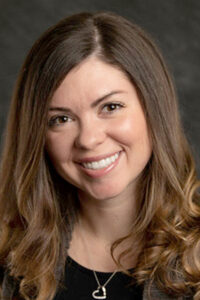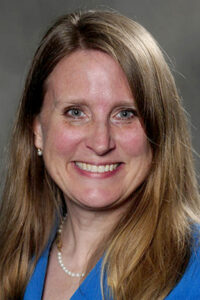
Every day on the job as an emergency nurse is different, but some days what comes through the doors is strange even to the most seasoned ED nurse.
“You never know what you’re going to get,” said Amber Adams, a nurse educator at Baptist Hospital in Beaumont, Texas, and full-time nursing instructor at Beaumont’s Lamar University. “Pretty much any nurse, if you ask them, has that weird, rare case that they’ve taken care of at some point in their career.”
At 11 a.m. Central time tomorrow, Adams will present out-of-the-ordinary cases published since January 2020 in The Rare, the Unusual, the Novel: Journal of Emergency Nursing Case Reviews.
“When you are triaging a patient, as an experienced nurse you’re going through a mental Rolodex of all the things that could go wrong with your patient,” said Adams, a section editor for the Journal of Emergency Nursing’s Clinical Nurses Forum. “This session is going to help supplement that clinical knowledge and make them a better nurse so they can potentially help their patient if they do have one of these unusual conditions.”
The featured cases represent a variety of patient populations and scenarios, including pediatrics and toxicology.

“One of them is a simultaneous emergency that involves both a neurologic emergency and a cardiac emergency,” Adams said. “We, as emergency nurses, should be very comfortable caring for patients with those conditions, but this patient had both simultaneously. So, it helps navigate how to prioritize as nurses, and it reinforces the importance of checking both systems and not just going with the most obvious complaint or the most obvious assessment finding.”
This case highlights an emergency nurse who was in the right place at the right time with the right expertise to save a life, said JEN Editor-in-Chief Jessica Castner, who has 20 years of experience as an emergency nurse, consultant and emergency nurse scientist.
“We don’t know who the specific nurse was that made this decision, but that was a rockstar nurse,” Castner remarked.
Another case involves a pregnancy-related emergency that, while still rare, is becoming less so as more Cesarean sections are performed, Adams said.
“We tried to choose cases that going forward it’s good for them to know,” she continued. “For example, the one I previously referenced about the cardiac and neurologic combination of urgency, they’re seeing that more with COVID cases now, even though it’s considered rare.”
The session also will include a primer for emergency nurses who want to publish cases they experienced.
“Case studies are probably one of the easiest ways to get started and learn about the publication process,” Adams said.
Almost every issue of JEN includes a case review, which Castner considers one of the most beneficial ways that nurses learn from one another and share their knowledge with the interdisciplinary team.
“You may be the first person in emergency care to ever see something, and what an important way to share with others so that they’re prepared to give the best patient care,” Castner said. “We’re the safety net of the whole health care system.”
This Learning Hour session will be available for on-demand viewing through Jan. 31.

